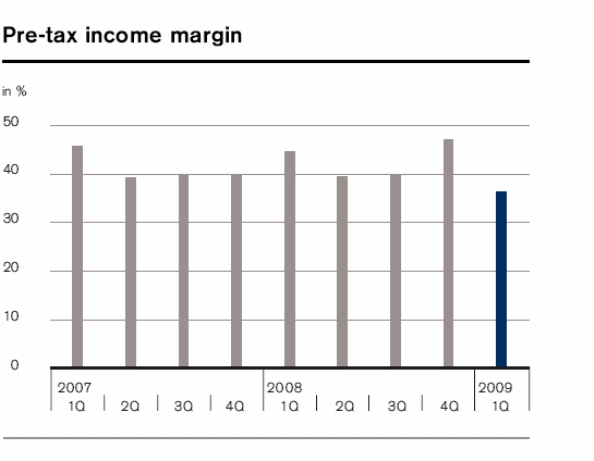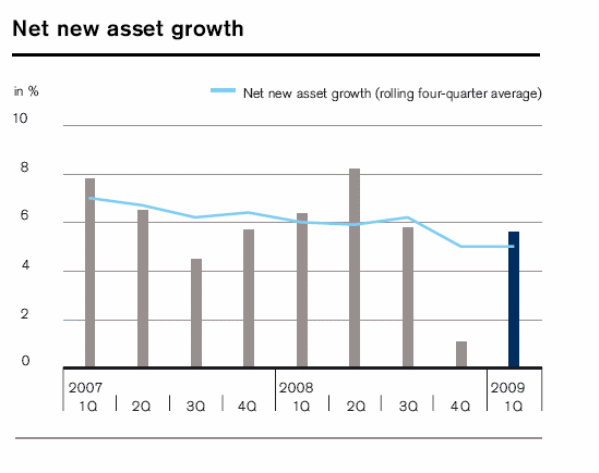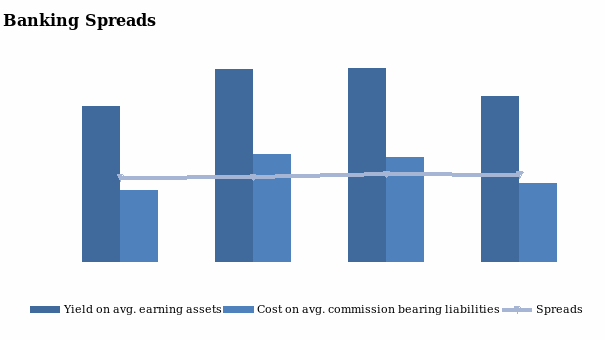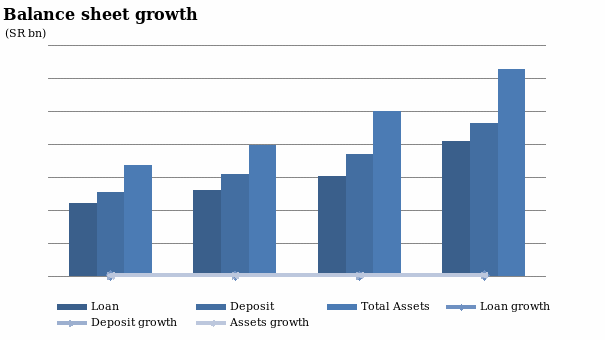Overview of the Banque Saudi Fransi Bank
Banque Saudi Fransi is a Joint Company in Saudi Arabia. This Bank is operating under the branch banking system. As per the recorded report in 2008, the Bank has currently 75 branches located in different centers in the Kingdom of Saudi Arabia. The employee strength of the company is 2336. This bank has been formed with the objective of rendering banking services under the Royal Government policies and guidelines. They are providing different banking services in the Kingdom. Shariah compliance products are offered by them which got approval and recognition from the independent board set up for this function. The Bank’s head office is situated in Al Maather Street in the Kingdom of Saudi. Subsidiary branches are established by the Bank for carrying out its capital market services. The Bank adopted the accounting standards prescribed by the Saudi Arabian Monetary Agency.
Risk management tools employed by the Banking Company
Overview of Credit Suisse First Boston
Credit Suisse First Boston is a leading stockbroker and investment Bank. It is the second largest bank in Switzerland. At first this bank was known as the Financier Credit Suisse First Boston and was established in 1978 between the First Boston Corporation and Credit Suisse and was afterwards used as the operating name for Credit Suisse’s Investment Banking operations. First Boston is the brand name of Credit Suisse. The investment bank was performing well after getting this brand name.
Comparison of banking ratios: BSF and Credit Suisse
Ratio Analysis
Return on average assets ratio of the BSF over the past 4 years shows continuously decreasing trend. In case of CS, the return on average assets shows improved position in 2009 compared to past years. When comparing BSF and CS, it is derived that the rate of return on average assets of BSF is greater than that of CS. The ratio of return on equity of BSF is showing improved and constant position in 2008 and 2009 compared to previous year ratio. In case of CS, the ratio has improved in 2009 in comparison to previous years. When comparing the two banks, it is evident that, in 2009, CS gained more return on equity than BSF. Rate Paid on Funds ratio of BSF is showing declining trend over the past 4 years. In case of CS also there is declining trend. Ratio of Net Interest Margin of BSF and CS exhibit declining trend and in 2009, it is in the lowest position compared to past years.
Liquidity: Reserve as a percentage of loans of BSF exhibit strong position in 2009. In case of CS, the ratio shows an improved position. It is derived from the improved reserve margin maintained by the company in the year 2009 compared to past years. The liquidity position of CS funds is better than that of BSF over the past four years.
Ratio of Long Term Debt to Total Liabilities and Equity of BSF exhibits a constant position over the past 4 years. In case of CS, continuous improvement is evident over the past 4 years.
Credit extension: Loans to Assets ratio of BSF and CS over the past 4 years exhibit mixed trend. Equity to Assets ratio of the BSF over the past 4 years shows a slightly increasing trend and in 2009 it shows an improved position compared to past years. In case of CS, an increasing trend is evident over the past 4 years. From this it is evident that the credit extension of CS is higher than that of BSF. The customer deposit ratio of the BSF over the past four years exhibits continuous declining trend and in case of CS a mixed trend is evident. The customer deposit ratio of CS is higher than that of BSF over the past four years. The capital adequacy ratio of BSF is in reviving position in 2009. In case of CS a continuous increasing trend is evident over the past four years. The Capital adequacy ratio of CS is better than that of BSF.
Expected trend in 2009-2010
In the coming years it is expected that the financial stability and performance would be improved through the diversified marketing strategies adopted by them. The risk of financial crisis in the external market environment can be effectively overcome by them through the hedging strategies. Credit Suisse is planning expansion of its capital up to 10% through introduction of 100m shares in the market for procuring funds for acquisition process. It will lead to better financial position of CS in the coming years. In order to maintain the strategic flexibility of the Company, it plans to issue another 100 m shares also. The Swiss Bank has an adequate capital base compared to other global players in the industry. As per the view of financial analysts, Credit Suisse is a winner in the period of financial crisis; a position they achieved through the marketing strategies adopted by them. It is expected that in the coming years 2009 and 2010 Credit Suisse will keep better financial position with improved financial performance and wider expansion of the business. (Credit Suisse’s Eyes Share Issue for Acquisitions).


Risk management tool adopted by Banque Saudi Fransi
Tools for controlling risk of currency and commission rate exposure
Banque Saudi Fransi uses derivatives as a tool for regulating the currency exposure and commission rate risks. Asset and liability management is a crucial function in banking companies. The hedging of currency can be done through applying derivatives. In this process, specific transactions are hedging in order to adjust the risk of currency exposure. Overall balance sheet exposures are also adjusted through application of strategic hedging technique. Forward foreign exchange contracts as well as currency swaps are similarly used by the company for the hedging process for managing currency risks in specific cases. Commission rate swaps and commission rate futures are used by the company for controlling the commission rate risk. Commission rate risk is mainly related to the exposure of fixed commission rate in specific situations. The commission rate swaps is an effective tool employed by the company for hedging the cash flow risk derived from the floating rate exposures. The hedging instruments employed by the company are in compliance with the documentation requirements as per the regulations. The hedging in cash flow is employed through recording of transactions at fair value. The credit worthiness of the counterparties is analyzed on continuous basis for minimizing the credit risk. The Bank adopts policies for the risk management such as setting up of appropriate risk limits.
The Bank uses various tools for controlling the market risk. The blend of VAR, stress testing, and sensitivity analysis is effectively used by the Bank together with the categorization of exposure to the market risk as trading and non-trading. Acceptable levels of risk are identified through setting limits and it helped the Bank to control the market risk related to trading book. Market risk relating to non-trading interest rate, analysis of the data through VAR methodology on daily basis is carried out by them. Interest rate risk relating to foreign currency exposures and equity price changes is managed through hedging strategies. Review of interest rate changes is carried out on weekly basis. Currency risk is mainly derived from the changes in the foreign exchange rate as a result of fluctuations in the economy of different countries. The Bank adopts hedging strategies for monitoring currency risk. Equity price risk is derived from the reduction in the fair value of equity as a result of changes in the equity levels. The Bank covers equity risk through adequate equity polices. Liquidity risk on investment and loan is covered through adoption of diversified funding options. The asset management is mainly based on assuring liquidity position. Along with this adequate cash balances and readily marketable securities are also kept with the Bank for ensuring the availability of liquid funds for the day to day operations.
Risk management tools of CSFB
Nowadays every bank regards impact of improved regulatory requirements as a priority area and takes necessary steps to deal with these requirements. The important requirement is to develop the long term strategies that deal with the growing regulations and taking necessary steps to incorporate strong risk management tools. Credit Suisse First Boston also created the strategic control environment and has employed efficient risk management. CSFB invented the Collateral Change program and created a team to change all accessible collateral systems and processes with well-organized risk management systems. The important aim of this bank is to develop the strategic plan to move towards the collateral management of the organization level. The main objective of Collateral team was to progress CSFB towards positive operational risk management and to develop an environment in which change could be controlled effectively. This team was charged with the increasing control tools within the strong and systematic processes to allow them to supervise progress.
Continuous improvement policy is adopted by the Bank in case of risk management according to the changes in the markets products and the economical changes. The risk department of the company is set up by bifurcating the credit division from other business lines. The common risk management procedures are continuously updated by the Bank. Risk rating technique is used by the company for classifying the customers on the basis of their intrinsic risk qualities. The Bank also uses automated rating system for this purpose.
Market approach of Banque Saudi Fransi
Banque Saudi Fransi maintains a high standard in market and has to its credit strong financial performance. The important reporting format of the bank is market segment or business segment. It means that a set of assets and operations are engaged in providing products or services that are focused on risk and returns that are different from those of other business segment. This bank is a Saudi Arabian Bank. In market segment the dealings are based on normal commercial terms and conditions and in keeping with the internal pricing policy of the bank. Reallocations of funds follow cost funding transfers and charge a particular commission based on intra bank rates. Banque Saudi Fransi introduced some business segment. They are retail banking, corporate banking, treasury banking and investment banking and brokerage. The important business segment of retail banking consists of areas such as overdraft, loans, savings account, deposit, credit and debit cards and certain forex products. Corporate banking integrates the demand accounts of corporate, overdraft, deposit, loan and other credit facilities and derivative products. Treasury Banking integrates services of treasury, trading activities, securities of investment, money market, funding operations of Bank and derivative products. The business segment of investment banking and brokerage includes the asset management activities and investment management services. The activities related to trading, organizing, arranging, advising and custody of securities, retail investment products, International and local share brokerage services etc.
The ratings of Banque Saudi Fransi are controlled by credit risk. This credit risk is connected to the portfolio of loan that has been rising till the full economic cycle. “The bank’s financial performance remains strong, with return on equity at 24.5% for 2008. BSF’s return on assets has shown some signs of erosion, declining to 2.5% in 2008 from 4.1% in 2006, as a result of stiffening competition and a sizable reduction of brokerage-related revenues related to the Saudi stock market correction.” (Standard and Poor’s Rates Banque Saudi Fransi in Good Market Position).



Market approach of Credit Suisse
Credit Suisse offers a variety of banking products to its customers. This includes investment banking, private banking, and asset management services on a global basis. Advisory services and comprehensive solutions are offered by the Bank to its customers. Its customers include institutional investors and high net-worth private clients worldwide. The retail clients in Switzerland is their another major customer group. Multiple asset classes are offered by them to its customers. “In its Asset Management business, Credit Suisse offers products across the full spectrum of investment classes and multiple-asset class products. Credit Suisse’s Asset Management business manages assets for a broad spectrum of clients ranging from governments, institutions and corporations to private individuals.” (Credit Suisse Announces the Launch of New Long/Short Equity Replication Index).
What market segments/approach did the banks take?
Bank Saudi Fransi offers specialized financial services to wide range of customers, big and small, either by itself or through its subsidiaries. These are in the segments of Investment Banking and brokerage services, and it is also in the segment and makes approaches in an array of Islamic banking products, duly approved by Shariah laws. These are Murabaha, Mudarbah, Ijarah, Musharaka and Tawaraq. (Banque Saudi Fransi Consolidated Balance Sheet (2008 and 2007), 5-16).
In as far as CS is concerned, it took up the market approach of seeking out and catering to the banking needs of high net worth and wealthy individuals and prosperous corporates, institutional and government clients, also seeking out retail clients in Switzerland. It has three divisions- private banking, investing banking and asset management who cater to specialized banking and financial needs of varied high powered and wealthy individuals and corporations. (Credit Suisse Annual Report 2008).
What are the management and operational structure, External Board composition and authorities of different committees?
Coming first to BSFB, it is a Saudi joint stock company established in1977 under a Royal Decree. It also provides Islamic banking products and services through its subsidiaries, Fransi Tadawul Co, Caam Saudi Fransi Association and an associate Sofinco Saudi Fransci. The main authority would be the governing of Shariah laws and it has also to abide by Saudi Arabian Monetary Agency (SAMA). Moreover the strictures and laws laid down by the Banking Control Law and Regulations for companies in KSA also need to be abided, as also local laws in the venues of their operations.
That being said, in the case of CS, it is a Swiss Corporation under Swiss laws, established by Alfred Escher in 1856. Its operational structure consists of three global divisions- Private Banking, Investment banking and Asset Management division. It is seen that shareholders hold main controlling interests and appointment and disbanding of committees require approval of shareholders at general meetings. Audit Committees provide recommendations and guidance to Board, who in turn, seek approval of shareholders on management matters affecting stakeholders’ interests.
What were the forces of change in the world that have impacted both banks in terms of their use of technology, deregulation (financial innovation/new product launches), globalization (branch network, mergers, alliances, upsizing/downsizing etc).
The forces of global changes that have impacted upon these banks have been the economic meltdown that has lowered energy prices, lowered interest rates and borrowings and constrained banking business to resort to monetary and fiscal measures to counter deflation, falling housing rates, and a general fall in the demand for industrial goods and services. The fall in the value of American Dollar has been a precipitating cause for concern and, in turn, has affected the valuation of major global currencies, including the Swiss franc. The fall in exports, escalation of tension in the Middle East and West Asia, along with major health concerns and epidemics have also contributed to a general laxity in banking goods, services and products worldwide. Tourist traffic, a major source of income for money changers have also witnessed decline, due to terrorists’ risks, post 9/11.
Use comparative financial data years for both banks (2006, 2007, 2008 & 1st Q 2009) to assess the impacts of current financial crises on both banks performance.
It is seen that the main impact of the current financial crisis, fuelled by sub-mortgage interest crisis in the US has had major impacts on performance of banks like BSFB and CS. Fall in energy prices and consumer banking products are evident.
The performance of BSFB through 2009 (1st Q) could be assessed as follows:
In terms of investments, it is seen that there has been significant fall in deposits from SAR27,710,023 during 2008 to SAR.20,788,735 during 1st Quarter of 2009, registering a fall of nearly 25% on deposits. Again coming to credit losses, it is seen that it has gone up from SAR 825,510 during 2008 to SAR 847,743 during 2009 (1st Quarter), an increase of 2.69%. One of the major effects of credit squeeze has been the fall in amount of dividend payout that has fallen from SAR 940,796 during 2007 to SAR 314,135 during 2008.
However, on the positive side it could be said that profits and customer deposits have not been much affected by the recent financial crisis in the world.
That being said, it is now necessary to consider the Credit Suisse financials. It is seen that during the first Quarter of 2009, the bank recorded net income attributable to shareholders of CHF 2,006 million, compared to a net loss attributable to shareholders of CHF 2,148 million in 1Q08. (Credit Suisse Annual Report 2009 1st Quarter).
Due to worldwide economic downturns, especially in the banking business Credit Suisse reported a loss of CHF 7,687 million for 2008, compared to income from continuing operations of CHF 7,754 million in 2007. Core net revenues were CHF 11,862 million in 2008 compared to CHF 34,539 million in the prior year. (Credit Suisse Annual Report 2008).
Thus it could be concluded that the current economic scenario has affected Credit Suisse in terms of revenue and profits, although it has staged remarkable recovery during first quarter of 2009 and is poised for further growth during 2009/10.
Works cited
- Banque Saudi Fransi Consolidated Balance Sheet (2008 and 2007). (Provided by customer).
- Credit Suisse’s eyes share issue for acquisitions. Thisismoney.co.uk. 2009.
- Credit Suisse Announces the Launch of New Long/Short Equity Replication Index: Credit Suisse. Reuters. 2009.
- Credit Suisse Annual Report 2009 1st Quarter. (Provided by customer).
- Credit Suisse Annual Report 2008. (Provided by customer).
- Graph showing Pretax income margins of CS: Credit Suisse: Financial Reports 1Q 2009. (Provided by customer)
- Global Values BSF Stock at SR54, 6 and Recommends ‘Buy’ on the Stock: Financial Performance-FY08. Global: Global Investment House. 2009.
- Standard and Poor’s Rates Banque Saudi Fransi in Good Market Position. AME Info: The Ultimate Middle East Business Resource. 2009.